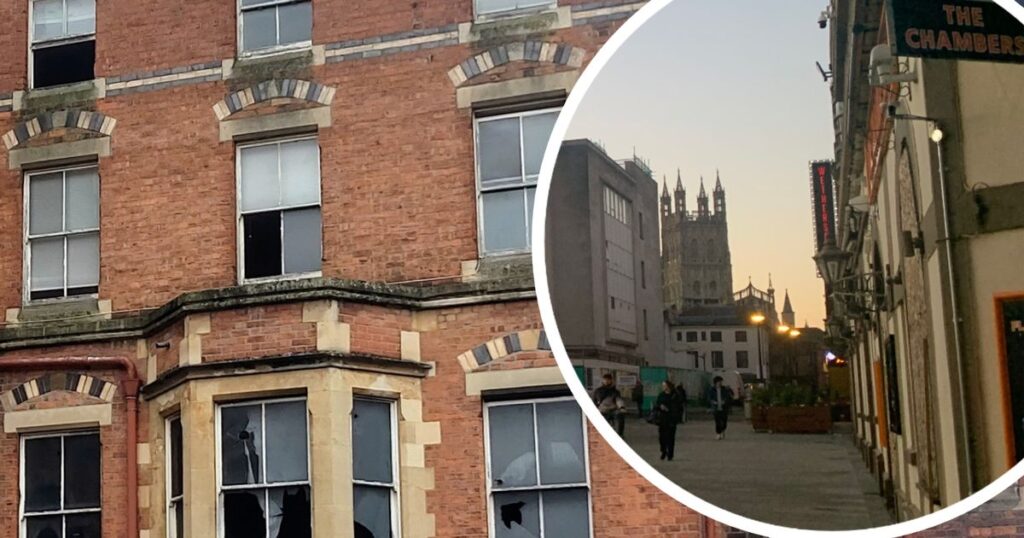Gloucester City Council has unveiled ambitious plans to revitalise several underutilised buildings into residential properties. The initiative includes transforming key sites into nearly 200 homes.
This strategy is designed to boost the local economy and tackle housing shortages by repurposing neglected areas. With council approval pending, this development aligns with broader regeneration efforts in the city.
Transforming City Eyesores
The redevelopment focus is on converting city centre eyesores into vital living spaces. Gloucester City Council is championing these efforts to breathe new life into neglected areas. This initiative sees the transformation of abandoned buildings, addressing both the aesthetic and functional aspects of urban living.
Spread Eagle Court, with its derelict condition, is a prime target for redevelopment. Formerly vibrant, its current state detracts from the city’s charm. The building has the potential to offer around 40 homes, aligning with the council’s objective to revitalise central locations and enhance urban aesthetics.
Key Development Sites Identified
Proposals include revamping the former Fortis Insurance building, vacant for over a decade, into residential units. This site could realise up to 60 new homes, subject to council negotiation and potential compulsory purchase.
20-26 The Oxbode sits strategically opposite the new university campus. Proposed plans aim to maintain retail operations while adding new apartments. This dual approach reflects the council’s vision of mixed-use spaces that preserve commercial vitality along with residential growth.
Infrastructure and Strategic Location Advantages
Wessex House demonstrates strategic potential due to its proximity to the Railway Station and Gloucester Royal Hospital. Plans to convert it into 45 dwellings are under discussion, which would significantly enhance its utility and value.
The Whitefriars development, entering its second phase, plans to replace a former dining establishment with 32 new apartments. This initiative highlights the council’s commitment to advancing living spaces while balancing the preservation of local charm.
By focusing on strategic sites, the council aims to maximise the urban infrastructure advantages. Such developments are intended to complement existing services, linking residential spaces seamlessly with transport and healthcare facilities.
Economic and Social Impacts
The proposed developments are not only an architectural endeavour but also an economic stimulus. By increasing city centre population, these projects are expected to spur local business growth, contributing to a vibrant economic environment.
Revitalising central Gloucester through housing boosts aligns with broader goals of enhancing community life. Increased residency will promote a more dynamic social atmosphere, encouraging cultural and recreational activities.
Challenges and Community Involvement
Engaging with property owners remains a challenge, yet the council is prepared to use compulsory purchase orders if necessary. This approach underscores the commitment to public benefit over individual setbacks.
Community involvement is crucial in this transformation. Feedback and participation from local residents are encouraged to ensure developments reflect communal needs and desires.
Ensuring transparency and inclusivity will be pivotal as these projects progress. Regular updates and consultations are promised to keep stakeholders informed and engaged.
Council’s Strategic Vision
This redevelopment plan is part of a larger framework to rejuvenate Gloucester’s cityscape. By focusing on underused properties, the council aims to enhance urban living environments substantially.
Council leader Jeremy Hilton emphasised the dual benefits of these projects, stating they address both housing shortages and economic revitalisation. The council’s vision indicates a future where Gloucester thrives as a modern, vibrant urban hub.
Path Forward for Approval
The proposals await approval at the next council meeting, a decision that will mark the beginning of a transformative era for Gloucester.
Conclusion
This strategic initiative promises a new chapter for Gloucester, balancing heritage preservation with modern urban needs. With potential to uplift housing and local economy, it stands as a significant city development undertaking.
The redevelopment plan for Gloucester’s city centre represents an effort to align urban growth with community needs. As plans progress, they promise an enhanced city living experience and economic opportunities.
Successful implementation will require continual community engagement and adaptive strategies to ensure these ambitious projects meet their full potential and contribute to Gloucester’s transformation.


